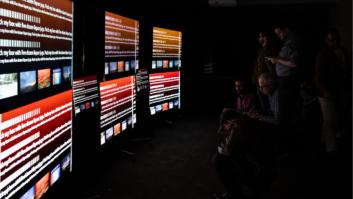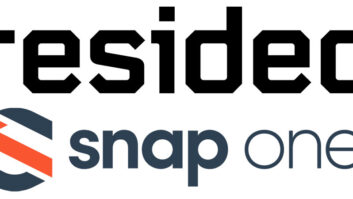Gordon Moore, co-founder of Intel, is famous for his observation that “over the history of computing hardware, the number of transistors in a dense integrated circuit doubles approximately every two years.” Or, more simply put, “Moore’s Law” states that computing power will roughly double every two years. If our industry had a similar law it would be: every year, electronics performance will increase while price will drop. Call it the AV Law. Yet while AV Law might be great for consumers, for us? Not so much.
Of course, the biggest offenders of the AV Law are flat panel TVs. They don’t even have the decency to wait two years before the price falls out, as new models with picture improvements and the latest features – infinite black, 3D, Smart, 4K – roll out, making inventory more stale than week-old donuts. When I began my AV journey, flat panel TVs and HD was just starting to launch. We sold our first 60-inch flat panel at a discounted price of $19,995. It was a watershed moment. Now I sell 60-inch panels all the time, and am happy if I can get more than $1,500 for one and clear $100 after shipping.
Equal offenders of the AV Law are AV receivers. The modern sub-$500 AVR has more power, processing, inputs, and features than 90% of the population will ever use. Multi-room/source and network streaming used to be a $1,000 upsell; now they help you get all the way to $599.
I purchased my first DVD player, a Pioneer combo LD/DVD spinner, for $899. The other day I saw a progressive scan player in HH Gregg for under $10. Under. Ten. Bucks. Of course, no one sells DVD players any more. No. We all sell Blu-ray players now. And get what? $100? Maybe a buck ten? (And we make more on the HDMI cable that goes with it.)
Two-piece projection was always the high-end haven, and we used to tell people not even to consider going the front projection route unless they were willing to budget at least $20,000 for the project. The projectors we sold were in the $10,000 to 15,000 range, and the accompanying screen was usually $2,500 to $5,000 depending on if they wanted a motor or not. Now we seem to have difficulty getting more than $3,500 for the admittedly terrific looking JVC and Epson models, with black levels and contrast and color uniformity that would decimate those models we were so proud of a few years ago. And The Wirecutter just recommended the “best screen” as one selling for $200.
Of course, nearly the entire touchscreen business – which used to be a guaranteed $1,000 to $3,000 sale, and usually in multiples – has now been decimated by iPads, iPhones, and Galaxys. Sure, there are arguments for going with a dedicated screen, (I placed ten Control4 panels around my mega-install job, primarily because they gave the homeowner a panel-to-panel video intercom feature which was incredibly useful in a 21,000 square foot home), but for most people, a $1,000 purpose-built touchscreen is a bad value proposition compared to a does-everything $400 iPad.
But there are two shining lights in our industry that just refuse to succumb to the AV Law: speakers and labor.
The labor part is really on you. If you aren’t charging appropriately for your hard earned and learned expertise, well, you probably don’t deserve to stay in business. A technician that services ultra-rich clients once told me that he accumulated more years of training and on the job experience than a surgeon, so why shouldn’t he charge as much? Sure, there is a lot of hubris in that, there’s also some truth. You’ve earned your knowledge. It is your single most precious commodity and you should charge accordingly for it. To quote Alec Baldwin, “Don’t give away your pie; it makes you look cheap.” (Not sure that’s totally applicable, but I love that quote.)
Now speakers are another story. And God bless the speaker manufacturers because they have somehow resisted the siren song of sellout and have maintained both performance and margin for dealers. They are smart enough to not try to reinvent their own wheel each year, letting us stock inventory and display models without the fear that a new model will suddenly make our investments obsolete. And, a speaker that sounds great today will still sound great tomorrow, and next week, and years from now. For most customers, an in-wall or in-ceiling speaker is a “purchase for life” and it can be easy to encourage stepping up to a better model since this will be a one-and-done purchase.
Many of us “old timers” got our start in this business because of distributed audio: giving people the ability to listen to music in any and every room of their home. At the time, they were thrilled with control that was no more exotic than a rotary volume knob on the wall. You would connect their CD player to a multi-channel amp and they would walk into a room and turn the knob to be rewarded with their favorite music playing and just smile. Now we can give them control over millions of songs in the palm of their hand and the array of speaker designs available gives performance that would satisfy any listener with form factors that can literally be invisible if need be.
Sure, distributed audio isn’t the sexiest game in town, but it is a proven winner that combines our two most profitable items, speakers and labor, into a surefire solution. With new wireless music systems like Sonos, Bluesound, Play-Fi, HEOS, and others, it is easier than ever to get in and move on to the next job, leaving nothing behind but music and happiness. These wireless systems allow for such an array of scaling that you can put together music packages that can be as simple as a tabletop speaker in a guest room, to a player coupled with a high-end outboard DAC, amp, and speakers for an audiophile listening solution.
It can be easy to chase new and cool tech, and turn your back on something as pedestrian as distributed audio. Yet it is often the tried and true things that keep you in business, and you need to remember to dance with the one that brought you. For many of us, distributed audio was that first girl that said yes.
John Sciacca is principal of Custom Theater and Audio in Myrtle Beach, SC.







